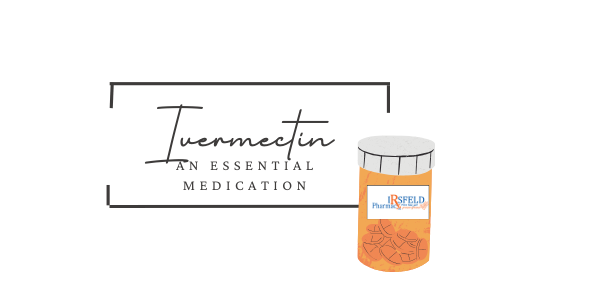Small Intestinal Bacteria Overgrowth

SIBO Small Intestinal Bacterial Overgrowth
This past week I had a patient discuss her SIBO journey with me. She had recently gone to the emergency room in her community, and the provider she saw had no idea what SIBO was, which left the patient confused. If you or someone you know has SIBO, you realize that it’s kind of a big deal for those who suffer from with it. My hope is that this article provides you with some background and knowledge of SIBO.
Small intestinal bacterial overgrowth, or SIBO, is a condition in which too many bacteria grow in the small intestine. Usually, the small intestine has fewer bacteria than the large intestine. But when the balance is disturbed, bacteria can thrive in the small intestine and cause various health problems. Let's explore SIBO, how to test for SIBO, and what causes SIBO.
SIBO stands for Small Intestinal Bacterial Overgrowth. The small intestine, part of the digestive system, is crucial in absorbing nutrients from our food. While bacteria are naturally present in the digestive tract, the small intestine typically contains fewer bacteria than the large intestine. When there is an abnormal increase in the number of bacteria in the small intestine, especially types of bacteria typically found in the colon (large intestine), this overgrowth leads to symptoms that affect the digestive system.
Some of the common symptoms of SIBO include bloating, excessive gas, abdominal pain or discomfort, diarrhea, constipation (less common, but it can occur), unexplained weight loss, and fatigue.
These symptoms occur because the excess bacteria ferment the carbohydrates in food, producing gas and other substances that can cause discomfort. Moreover, SIBO can interfere with the absorption of nutrients, leading to malnutrition in severe cases. It is essential to identify and treat SIBO to avoid long-term complications.
One of the most common ways to diagnose SIBO is through breath testing. This test measures the levels of gases, specifically hydrogen and methane, produced by the small intestine bacteria. These gases are not produced by human cells but by the bacteria in the gut, so their presence in the breath can indicate bacterial overgrowth.
The SIBO breath test is simple and noninvasive.
Here's how it works:
Preparation: Before taking the test, patients must follow a specific diet for a day or two, which helps reduce any interference from food residue in the intestines. Usually, this involves avoiding certain foods like complex carbohydrates and fibers, which can ferment and produce gases in the gut.
Fasting: The patient must fast overnight before the test, drinking only water.
Test Procedure: On the test day, the patient drinks a solution containing either glucose or lactulose. These are sugars that the bacteria ferment, producing gases like hydrogen and methane.
Breath Samples: After drinking the solution, the patient gives breath samples at regular intervals (typically every 15 to 20 minutes) over a few hours. These samples are analyzed to measure the levels of hydrogen and methane.
If the bacteria in the small intestine ferment the glucose or lactulose, they produce hydrogen, methane, or both. These gases are absorbed into the bloodstream, carried to the lungs, and then exhaled to be measured in the breath.
Interpreting the Results
Hydrogen: If hydrogen levels increase during the breath test, it typically indicates the presence of bacteria fermenting the sugars. Hydrogen is the most common gas associated with SIBO.
Methane: Methane is another gas produced by bacteria, specifically by a organism called Methanobrevibacter smithii. If methane levels are elevated, it can indicate a different type of bacterial overgrowth. Methane production is often linked with constipation-type SIBO, while hydrogen tends to be associated with diarrhea.
Combination of Gases: Some patients may produce hydrogen and methane, indicating a mixed type of SIBO. Each type may require a slightly different treatment approach.
The breath test is a widely used diagnostic tool because it's noninvasive and fairly accurate. However, it's not perfect, and sometimes, the results can be difficult to interpret. In some cases, doctors may use additional tests, like a stool test or even a small intestine aspirate culture (a more invasive test), to confirm the diagnosis.
Understanding the causes of SIBO can help prevent and treat it effectively. SIBO occurs when the natural defense mechanisms of the small intestine are compromised, allowing bacteria to grow excessively. Several factors can contribute to this condition:
The small intestine relies on muscular contractions, called peristalsis, to move food and bacteria along the digestive tract. If this movement is slowed down (a condition known as motility disorder), bacteria can linger in the small intestine and begin to multiply.
Poor motility can be caused by:
Diabetes: High blood sugar levels can damage nerves that control the muscles in the digestive tract, leading to slower movement.
Irritable Bowel Syndrome (IBS): Some people with IBS, especially those with constipation-predominant IBS, may have slower intestinal movement.
Scleroderma: This autoimmune condition affects the connective tissue, including the muscles of the intestines, leading to reduced motility.
Some physical abnormalities in the digestive tract can lead to SIBO, such as:
Surgery: Previous surgeries, like gastric bypass or removal of a part of the small intestine, can create pockets or blind loops where bacteria can grow.
Diverticula: These are small pouches that form in the walls of the intestines. They can trap bacteria, allowing them to multiply.
Stomach acid kills harmful bacteria that enter the digestive system through food. Conditions that reduce stomach acid production, like chronic use of proton pump inhibitors (PPIs) or conditions like atrophic gastritis, can allow bacteria to thrive in the small intestine.
People with weakened immune systems, such as those with HIV/AIDS or those undergoing chemotherapy, may be more prone to developing SIBO because their bodies are less able to control bacterial growth in the digestive tract.
Although not a direct cause, diet can influence the development of SIBO. Diets high in refined carbohydrates and sugars can feed the bacteria in the gut, leading to overgrowth. Additionally, a diet low in fiber may not promote healthy gut motility, contributing to SIBO.
Certain conditions, like Crohn's disease or celiac disease, can cause inflammation or damage to the small intestine, making it more susceptible to bacterial overgrowth.
SIBO is a condition that occurs when there is an overgrowth of bacteria in the small intestine. It can lead to digestive symptoms such as bloating, gas, diarrhea, and malnutrition. Diagnosing SIBO often involves a breath test to measure levels of hydrogen and methane, which are gases produced by bacteria in the small intestine. The causes of SIBO vary, but poor motility, structural abnormalities, low stomach acid, immune system disorders, and certain chronic conditions are vital contributors.
Next week article will review some of the treatment options, both conventional and with supplements
Stop by or call the pharmacy if you want more information about SIBO. Please visit my website at www.irsfeldpharmacy.com to find this and other archived articles in the blog section.
Until next time, be vigilant about your health!!












Share On: